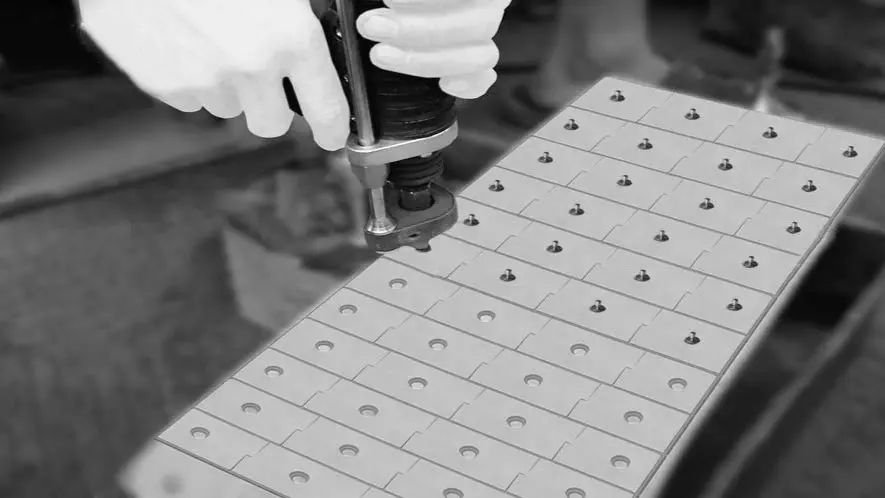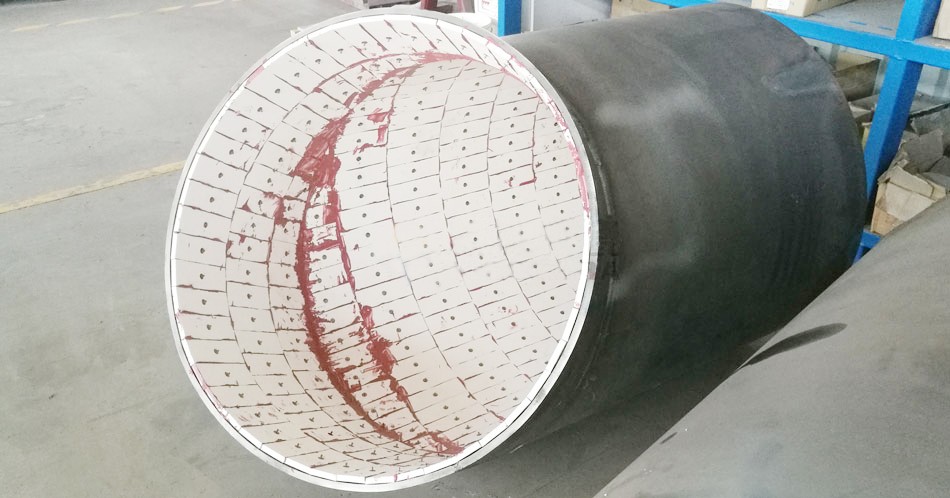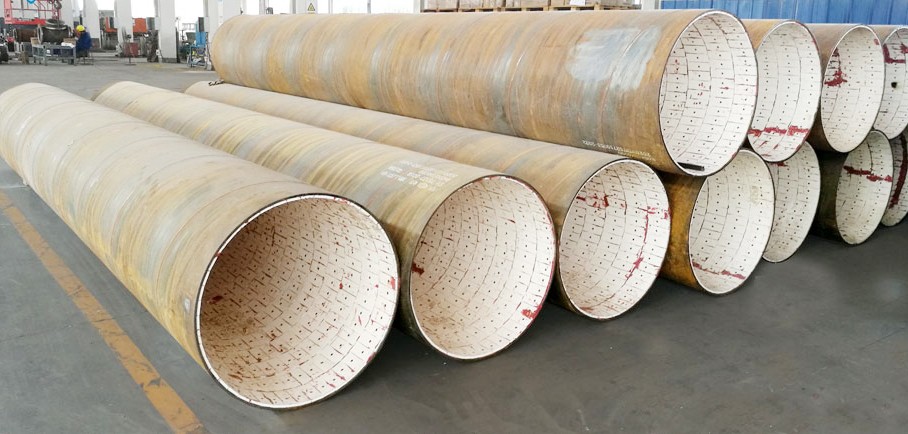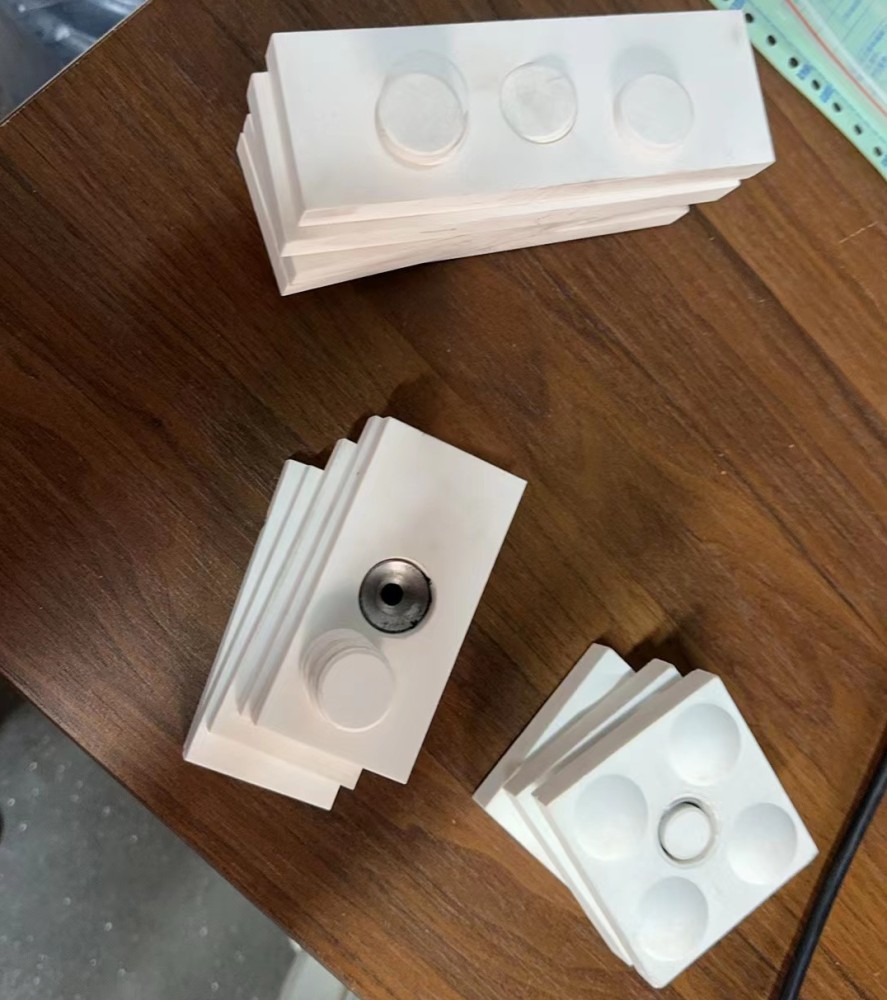In the competitive landscape of industries such as power generation and steel manufacturing, the demand for robust and efficient components is ever-increasing. Among these, wear-resistant ceramic hot air pipes have emerged as a vital asset due to their exceptional durability and high-temperature performance. This article delves into the unique features of these pipes, the various installation considerations, and the best practices for ensuring optimal operation.

Introduction to Wear-Resistant Ceramic Hot Air Pipes
Wear-resistant ceramic hot air pipes are specialized components designed to withstand the rigors of high-temperature applications. Composed mainly of alumina ceramic, these pipes are engineered to endure extreme wear and thermal stresses, making them indispensable in sectors where material degradation could lead to costly downtime and maintenance.
Understanding Ceramic Materials
Ceramic materials have long been recognized for their unique properties, including hardness, thermal stability, and resistance to corrosion. Their molecular structure, typically consisting of metal and non-metal elements, grants them impressive mechanical properties. For instance, alumina (Al2O3) is particularly valued in industrial applications for its strength and durability.

Importance of Durability in Industrial Applications
In environments like power plants and steel mills, equipment is subjected to intense wear from abrasive materials and high thermal loads. The failure of components can result in not only significant economic loss but also safety hazards. Therefore, choosing materials that promise long-lasting performance is crucial.
Cost Implications of Material Failure:When machinery fails, the costs can accumulate rapidly, including lost production time, repair costs, and potential fines for environmental violations. Investing in wear-resistant materials can mitigate these risks significantly.
Safety Considerations:In high-temperature applications, the risk of component failure poses not only financial consequences but also severe safety risks to personnel. Thus, ensuring that materials used can withstand the operational demands is paramount.
Key Features of Wear-Resistant Ceramic Hot Air Pipes
1. Exceptional Hardness and Wear Resistance
The primary material used in the fabrication of wear-resistant ceramic hot air pipes is alumina, which boasts a hardness rating that typically exceeds HRA88. This remarkable hardness allows these pipes to resist wear and tear from abrasive substances, thus extending their lifespan even under harsh operational conditions.
Comparison with Other Materials:Compared to traditional metals or plastics, ceramic materials demonstrate superior hardness, allowing them to outperform alternatives in abrasive environments. While metals may be prone to scratching and deformation, ceramics maintain their structural integrity over time.
Real-World Examples:In coal-fired power plants, alumina ceramic pipes can effectively handle the abrasive nature of coal ash and particulate matter, leading to significantly lower maintenance costs compared to conventional materials.

2. High-Temperature Performance
Alumina ceramic is known for its outstanding thermal stability, making it suitable for high-temperature applications. These pipes can maintain their mechanical properties at elevated temperatures, ensuring reliable performance even when subjected to thermal shocks.
Thermal Conductivity and Insulation:Ceramics typically possess low thermal conductivity, which can also serve as an advantage in reducing heat loss in certain applications. This feature is particularly beneficial in processes where maintaining temperature is crucial.
Implications for Energy Efficiency:The ability to minimize heat loss contributes to overall energy efficiency in industrial processes, further solidifying the case for using wear-resistant ceramic pipes.
3. Chemical Stability
Alumina ceramic is chemically inert, providing excellent resistance to corrosion and chemical attack. This characteristic ensures that the pipes can handle various aggressive environments without compromising their integrity.
Applications in Different Industries:From power plants that utilize coal and other fuels to steel mills where chemical processes are prevalent, the resistance to corrosion expands the application possibilities for these ceramic pipes. Industries dealing with acids, bases, or corrosive gases particularly benefit from this property.
Installation Considerations for Optimal Performance
While wear-resistant ceramic hot air pipes offer significant benefits, proper installation is essential to maximize their lifespan and performance. Incorrect installation can lead to premature failure, undermining the advantages these materials provide.
1. Adhesive Selection Based on Operating Temperature
Choosing the right adhesive is critical when installing ceramic hot air pipes. The bonding material must withstand the operational temperature to ensure the integrity of the installation.
High-Temperature Ceramic Adhesives:For operating temperatures up to 350°C, high-temperature ceramic adhesives can be employed. These adhesives offer a good balance of performance and ease of application. They are designed for quick curing, allowing for efficient installation processes.
Limitations of Regular Adhesives:Regular ceramic adhesives tend to lose their bonding strength at temperatures exceeding 150°C, leading to potential failures in applications where heat spikes are common. Hence, proper adhesive selection is vital.
Case Studies on Adhesive Failures:There have been documented cases where inadequate adhesive selection led to operational failures, necessitating costly repairs and prolonged downtime.
2. Advanced Installation Techniques for Elevated Temperatures
When the operating temperature exceeds 350°C, stud welding is the preferred installation technique. This method not only provides a secure connection but also enhances the durability of the installation.
Benefits of Stud Welding:Stud welding creates a robust mechanical bond, reducing the risk of detachment due to thermal expansion or contraction. Additionally, this method is resilient against both high temperatures and mechanical impacts, making it ideal for demanding applications.
Considerations for Professional Installation:Due to the complexity of stud welding, it is imperative to engage skilled technicians for installation. This investment in expertise can significantly reduce the likelihood of installation failures.
Training and Certification:Ensuring that technicians are well-trained and certified in specialized welding techniques can further enhance the quality of installations.

Addressing Pipe Sealing and Material Transport
In applications where the pipes are responsible for transporting specific materials, sealing becomes a critical factor. Inadequate sealing can result in leaks, which not only affects performance but can also pose safety risks.
1. The Importance of Proper Sealing
Effective sealing ensures that the transported materials remain contained, preventing losses and potential hazards. When sealing is insufficient, leaks can lead to material wastage and environmental concerns.
Factors Affecting Seal Integrity:Several factors can impact the effectiveness of seals, including temperature fluctuations, pressure changes, and the nature of the materials being transported.
Consequences of Inadequate Sealing:Poor sealing can lead to significant operational disruptions, regulatory penalties, and potential safety hazards, highlighting the necessity for rigorous sealing practices.
2. Utilizing Integrally Molded Ceramic Pipes
To address sealing challenges, integrally molded ceramic pipes can be an effective solution. These pipes are designed to provide a more reliable seal, thus minimizing the risk of leaks and enhancing the overall efficiency of the system.
Advantages of Integrally Molded Pipes:Integrally molded pipes eliminate potential failure points associated with traditional sealing methods, ensuring a continuous and secure connection throughout the system.
Application Scenarios:In situations where pipe integrity is critical, such as transporting hazardous materials, integrally molded pipes provide peace of mind by reducing the chances of leakage.
Best Practices for Maintenance and Inspection
To ensure the longevity and performance of wear-resistant ceramic hot air pipes, regular maintenance and inspection are essential. Implementing best practices can help identify potential issues before they escalate.
1. Routine Inspections
Establishing a routine inspection schedule allows for the early detection of wear or damage. Inspections should focus on areas prone to thermal stress and mechanical impacts.
Key Inspection Points:
Check for visible cracks or chips in the ceramic material.
Inspect adhesive joints for signs of degradation.
Monitor temperature variations and ensure they remain within recommended limits.
Frequency of Inspections:Depending on operational intensity, inspections should be conducted monthly, quarterly, or biannually to maintain optimal performance.
2. Maintenance Protocols
Implementing a comprehensive maintenance protocol helps sustain the operational efficiency of ceramic hot air pipes. This may include cleaning processes to remove abrasive particles and regular checks on adhesive integrity.
Cleaning Techniques:Depending on the application, cleaning may involve the use of specialized solvents that do not compromise the ceramic material. Regular cleaning can prevent the buildup of residues that may lead to corrosion or wear.
Documenting Maintenance Activities:Keeping a log of maintenance activities can help identify patterns in wear and tear, allowing for predictive maintenance approaches that can save costs and minimize downtime.
Conclusion
Wear-resistant ceramic hot air pipes stand out as indispensable components in industries that demand high performance under extreme conditions. Their unique features, including exceptional hardness, high-temperature stability, and chemical resistance, make them suitable for a variety of applications.
By understanding the key characteristics of these pipes and adhering to proper installation and maintenance practices, businesses can maximize their investment and ensure the long-term reliability of their systems. Ultimately, the careful selection of materials, installation techniques, and maintenance protocols will lead to enhanced operational efficiency and reduced downtime, driving success in a competitive industrial landscape.
Future Trends in Wear-Resistant Materials
As industries continue to evolve, the demand for advanced materials is on the rise. Future trends may include the development of even more robust ceramic composites that can handle higher stresses and temperatures. Innovations in material science could lead to the introduction of new formulations that enhance the performance of wear-resistant ceramics, making them even more versatile for industrial applications.


 English
English


